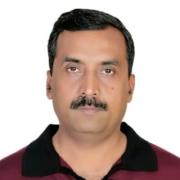

Splunk Enterprise Security and Splunk AppDynamics are both integral to their respective fields with strengths that cater to different business needs: security management and application performance monitoring. Splunk Enterprise Security has the upper hand in advanced threat detection, whereas Splunk AppDynamics excels in application transaction visibility.
Features: Splunk Enterprise Security offers advanced threat detection, real-time monitoring, and extensive analytics to strengthen security operations. Splunk AppDynamics offers application performance management that includes end-to-end transaction visibility, performance diagnostics, and a detailed user journey, making it ideal for maintaining application efficiency.
Room for Improvement: Splunk Enterprise Security could enhance user interface ease of use and integrate more with third-party solutions for a seamless experience. Splunk AppDynamics needs improvements in ease of deployment for complex environments, while expanding more robust reporting features and reducing alert noise for better issue prioritization.
Ease of Deployment and Customer Service: Splunk Enterprise Security is noted for effective deployment in large-scale environments and offers solid customer support with comprehensive resources. Splunk AppDynamics is recognized for streamlined deployment and ease of integration, providing responsive customer service, making it suitable for rapid deployments.
Pricing and ROI: Splunk Enterprise Security may involve higher setup costs due to its comprehensive features but offers a strong ROI through enhanced security capabilities. Splunk AppDynamics provides competitive pricing, focusing on delivering ROI through improved application performance and minimization of downtime, making it an efficient cost-effective solution.
Overall, as a production gatekeeper, we achieve at least 50% efficiency immediately, with potential savings ranging from 60 to 70% as well, reinforcing why it is a popular tool in the banking industry.
According to errors, exceptions, and code-level details related to their application performance on a daily basis, the application development team tries to help with Splunk AppDynamics to reduce errors and exceptions, which helps the end users get application availability and feel more confident.
To understand the magnitude of it, when the company asked to replace Splunk AppDynamics with another tool, I indicated that for the proposed tool, we would need five people to do the analysis that Splunk AppDynamics enables me to do.
The documentation for Splunk Enterprise Security is outstanding. It is well-organized and easy to access.
We couldn't calculate what would have been the cost if they had actually gotten compromised; however, they were in the process, so every investment was returned immediately.
On average, my SecOps team takes probably at least a quarter of the time, if not more, to remediate security incidents with Splunk Enterprise Security compared to our previous solution.
AppDynamics is much more helpful.
We got a contact, an account manager, to work directly with for technical support.
They help us resolve any issues raised by our team relating to operations, application instrumentation, or any other issues.
We have paid for Splunk support, and we’re not on the free tier hoping for assistance; we are a significant customer and invest a lot in this service.
I have had nothing but good experiences with Splunk support, receiving timely and helpful replies.
We've had great customer success managers who have helped us navigate scaling from 600 gigs to 30 terabytes.
We have reached maximum capacity in our tier, and extending capacity has not been cost-effective from Splunk's perspective.
I would rate the scalability of Splunk AppDynamics as a nine out of ten.
I assess how Splunk AppDynamics scales with the growing needs of my organization as good, since we are growing and adding more servers.
We currently rely on disaster recovery and backup recovery, which takes time to recover, during which you're basically blind, so I'm pushing my leadership team to switch over to a clustering environment for constant availability.
They struggle a bit with pure virtual environments, but in terms of how much they can handle, it is pretty good.
It is easy to scale.
It is necessary to conduct appropriate testing before deploying them in production to prevent potential outages.
There are no issues or bugs with the 20.4 version; it is very stable with no functionality or operational issues.
Splunk AppDynamics is superior to any alternative, including Dynatrace.
They test it very thoroughly before release, and our customers have Splunk running for months without issues.
Splunk has been very reliable and very consistent.
It provides a stable environment but needs to integrate with ITSM platforms to achieve better visibility.
Splunk AppDynamics does not support the complete MELT framework, which includes metrics, events, logging, and tracing for the entire stack.
If AppDynamics could develop a means to monitor without an agent, it could significantly improve application performance and reduce potential problems.
A good integration with Splunk would be very interesting, as Splunk is a good product for logs, and that part is currently missing in Splunk AppDynamics.
Improving the infrastructure behind Splunk Enterprise Security is vital—enhanced cores, CPUs, and memory should be prioritized to support better processing power.
Splunk Enterprise Security is not something that automatically picks things; you have to set up use cases, update data models, and link the right use cases to the right data models for those detections to happen.
For any future enhancements or features, such as MLTK and SOAR platform integration, we need more visibility, training, and certification for the skilled professionals who are working.
We completed a three-year deal for Splunk and for AppDynamics, which costs millions of dollars.
Customers have to pay a premium price, however, they receive considerable value from the product.
All these solutions at the moment are cheap, but it is like paying for insurance; you pay insurance to avoid major damage.
I saw clients spend two million dollars a year just feeding data into the Splunk solution.
The platform requires significant financial investment and resources, making it expensive despite its comprehensive features.
I find it to be affordable, which is why every industry uses it.
We have multiple tools, but end users prefer to use Splunk AppDynamics because their portal navigation is very simple and clear.
The real user monitoring and digital experience monitoring effectively track actual user experience with the applications, including page loading, interaction time for both desktop and mobile applications.
This is the best feature because, although you can't monitor a whole application at once, Splunk AppDynamics gives you the option that if there is any failure—simple failure regarding anything set up as per our use cases—you will get an alert.
This capability is useful for performance monitoring and issue identification.
I assess Splunk Enterprise Security's insider threat detection capabilities for helping to find unknown threats and anomalous user behavior as great.
Splunk Enterprise Security provides the foundation for unified threat detection, investigation, and response, enabling fast identification of critical issues.
| Product | Market Share (%) |
|---|---|
| Splunk Enterprise Security | 22.4% |
| Splunk AppDynamics | 18.6% |
| Other | 59.0% |


| Company Size | Count |
|---|---|
| Small Business | 55 |
| Midsize Enterprise | 36 |
| Large Enterprise | 189 |
| Company Size | Count |
|---|---|
| Small Business | 110 |
| Midsize Enterprise | 50 |
| Large Enterprise | 257 |
Splunk AppDynamics enhances application performance monitoring with advanced diagnostics and real-time insights, offering seamless end-to-end transaction tracking and infrastructure visibility.
AppDynamics provides critical tools for businesses to analyze application behavior and performance. Through innovative features like transaction snapshot analysis and adaptable dashboards, users can quickly identify and address issues, ensuring high levels of system uptime and efficiency. It is designed to support complex environments including Kubernetes and AWS, enhancing user experience by detecting performance issues early. Despite needing improvements in network monitoring and integration, it remains a robust option for tracking application health.
What are the key features of AppDynamics?In industries like financial services and e-commerce, AppDynamics facilitates performance tracking across distributed systems, optimizing infrastructure to meet consumer demands. It excels in environments needing precise transaction monitoring and is pivotal in delivering high value and satisfaction.
Splunk Enterprise Security delivers powerful log management, rapid searches, and intuitive dashboards, enhancing real-time analytics and security measures. Its advanced machine learning and wide system compatibility streamline threat detection and incident response across diverse IT environments.
Splunk Enterprise Security stands out in security operations with robust features like comprehensive threat intelligence and seamless data integration. Its real-time analytics and customizable queries enable proactive threat analysis and efficient incident response. Integration with multiple third-party feeds allows detailed threat correlation and streamlined data visualization. Users find the intuitive UI and broad compatibility support efficient threat detection while reducing false positives. Despite its strengths, areas such as visualization capabilities and integration processes with cloud environments need enhancement. Users face a high learning curve, and improvements in automation, AI, documentation, and training are desired to maximize its potential.
What Are the Key Features of Splunk Enterprise Security?In specific industries like finance and healthcare, Splunk Enterprise Security is instrumental for log aggregation, SIEM functionalities, and compliance monitoring. Companies leverage its capabilities for proactive threat analysis and response, ensuring comprehensive security monitoring and integration with various tools for heightened operational intelligence.
We monitor all IT Operations Analytics reviews to prevent fraudulent reviews and keep review quality high. We do not post reviews by company employees or direct competitors. We validate each review for authenticity via cross-reference with LinkedIn, and personal follow-up with the reviewer when necessary.